Creating Classrooms That Teach the Whole Kid
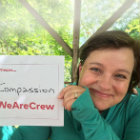 By Dina Strasser
By Dina Strasser
It can be mind-bending to allow yourself to believe that your students can solve most of their own problems — that math problem they don’t get on the first (or second) pass, the missing homework, or the kid poking them in the back of the head with an eraser.
After all, we’re the teachers. We’re supposed to predict, contain, and control student behavior, correct?
This was the message of the training – such as it was – in classroom management that I received as a 20-something year old grad student in the early 2000’s. Lay down the rules clearly, throw in some genuine caring – but you’re the one in charge, and don’t ever, ever, let them see you sweat.
It’s about the whole kid.
What this approach really implies, however, is at best a two-dimensional understanding of teaching: that teachers are in the classroom to effectively deliver content, and along the way basically ensure that there is no need to call the fire department.
It’s been one of the great pleasures and comforts of my professional life to watch the teaching profession’s conception of student achievement expand to incorporate what seasoned teachers have understood all along. It’s about the whole kid – the entire kit and caboodle of what they need to know to be happy, healthy, contributing members of society.
As a result, respectful, fruitful collaboration among students is not “nice” for your kids to master before they make their own way in the world – it is absolutely necessary. It’s especially necessary when problems get in the way of our goals. You know, like life.
Collaborative classrooms, therefore, as my colleague Anne Vilen wrote in this practical ASCD Express article, are a bit like laboratories for our kids. They are safe spaces for students to be explicitly taught, to practice, and to master the communicative skills needed to problem-solve (we call this “grappling” where I work): where students come up against an obstacle and must decide how to meet it, all while preserving their own health and that of their classroom community. It’s a tall order. Fortunately, we have effective and sustainable teacher practices that foster these skills in kids.
1: Co-create norms.
Rules, constitutions, guidelines, expectations – the behaviors we wish students to exhibit in our classrooms go by many names. We call them norms. Schoolwide and classroom norms are the foundation for respectful behavior among students, between students and teachers, and among teachers. Norms provide students with a rationale for why boundaries exist, cutting down on the frequency of the ubiquitous “But why can’t I ____?” question.
The norms tell them why not, and this appeals to students’ sense of fairness and supports their self-discipline. The response doesn’t need to come from the teacher: “Because I said so.” Instead, students understand that the reason “why not” is based on a norm that they agreed to live by. Most problems in the classroom of a behavioral nature come about when a poorly understood (and perhaps undefined) norm of behavior is broken. When norms are explicit, alive, and communal, students have a firm foundation from which to start problem-solving together.
There’s no one right way to go about co-creating norms with students, beyond making sure students believe they have ownership over what’s decided. The key element is helping students identify and articulate how they want to treat each other and be treated by others, and for the teacher to distill the suggestions into a clear and effective list. Younger children can use picture cues or graphics; drawing an activity they like or dislike in school may be a concrete foundation from which to start.
Older students can be given sticky notes and asked to write anonymously for any part of this process. Notes can be placed on a larger piece of chart paper and grouped to find the patterns that will establish the consolidated norms. Here’s a video showing you how co-created norms can live in a classroom.
Source: Edutopia
2. Practice the grownup language of problem-solving.
Sentence starters aren’t just for writing prompts. Students need to be explicitly taught what may be taken for granted among adults: the “magic words” needed to piggyback on an idea, disagree with an idea respectfully, or voice a personal opinion without shutting down others.
If you think creating a quick anchor chart and asking students to use it word for word is too easy to be effective, try it and watch how kids respond. Some examples:
-
-
- Could you explain that again in different words?
- I’m not following you.
- I respectfully disagree, because…
- I see things differently.
- I agree, because…
- I wonder if…
- I’d like to finish my thought.
- Could you give an example? What evidence are you thinking about?
- Do I hear you saying that…
- We seem to be on the same page.
- Overall, I think…
-
This may take some modeling and orienting from you; kids’ first attempts at using these starters can look an awful lot like them staring at you while you go crazy using all the verbal and nonverbal cues at your disposal to remind them to refer to the chart while they’re talking.
Once they get the hang of it, though, you can step back and watch their skills bloom. Pretty soon they’re saying “I see things differently” and “I wonder if…” to their friends in the lunchroom as well as the classroom.
3. Finally: When the going gets rough, think restoratively.
Traditionally, a classroom or school discipline plan focuses on individuals and consequences. A student who breaks a rule receives a consequence, which may or may not be relevant, respectful, or realistic. A restorative approach has a different aim: community and reparation. Through restorative questions, the student’s actions are framed as choices that impact relationship.
As a result, instead of simply “being punished,” the student is given a chance to explain him- or herself and consider the impact of his or her actions. The student is then held accountable by taking actions that repair the harm that he or she has done. These actions strengthen the learning community and lay the foundation for collaboration to begin or to expand.
The International Institute for Restorative Practices (2015) offers the following set of potential restorative questions to use to address challenging behavior:
What happened?
What were you thinking at the time?
What have your thoughts been since?
Who has been affected by what you did?
In what way have they been affected?
What do you think you need to do to make things right?
Restorative questions can be used effectively as an intervention in the moment or as a more formal means of reflecting with the student (or students) involved in challenging behavior. Ideally, however, restorative questions evolve to serve as a framework for students to moderate their own discussions and conflicts before they ever get to you. Posting restorative questions in the classroom and referring to them frequently will support students to repair the harm – and collaboratively problem-solve – all on their own.
Photos: EL Education
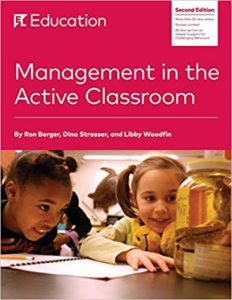

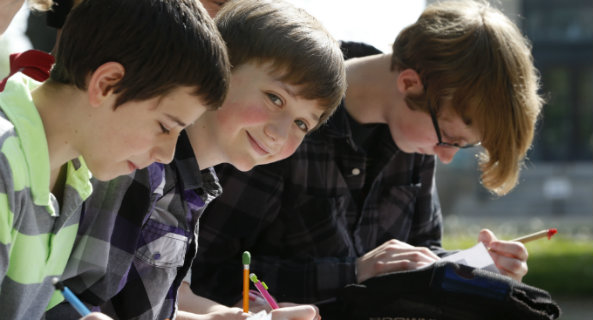
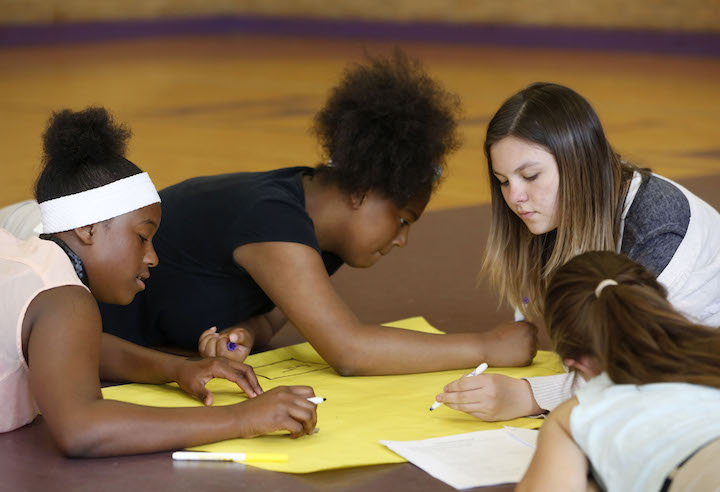
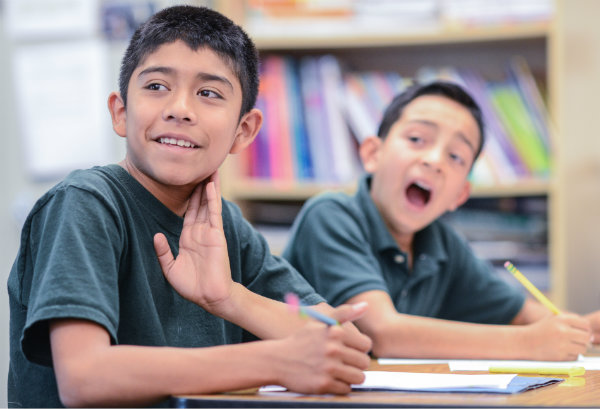





























I love this guidance, Dina! What good insights. And I appreciate the link to the ASCD express article as well.